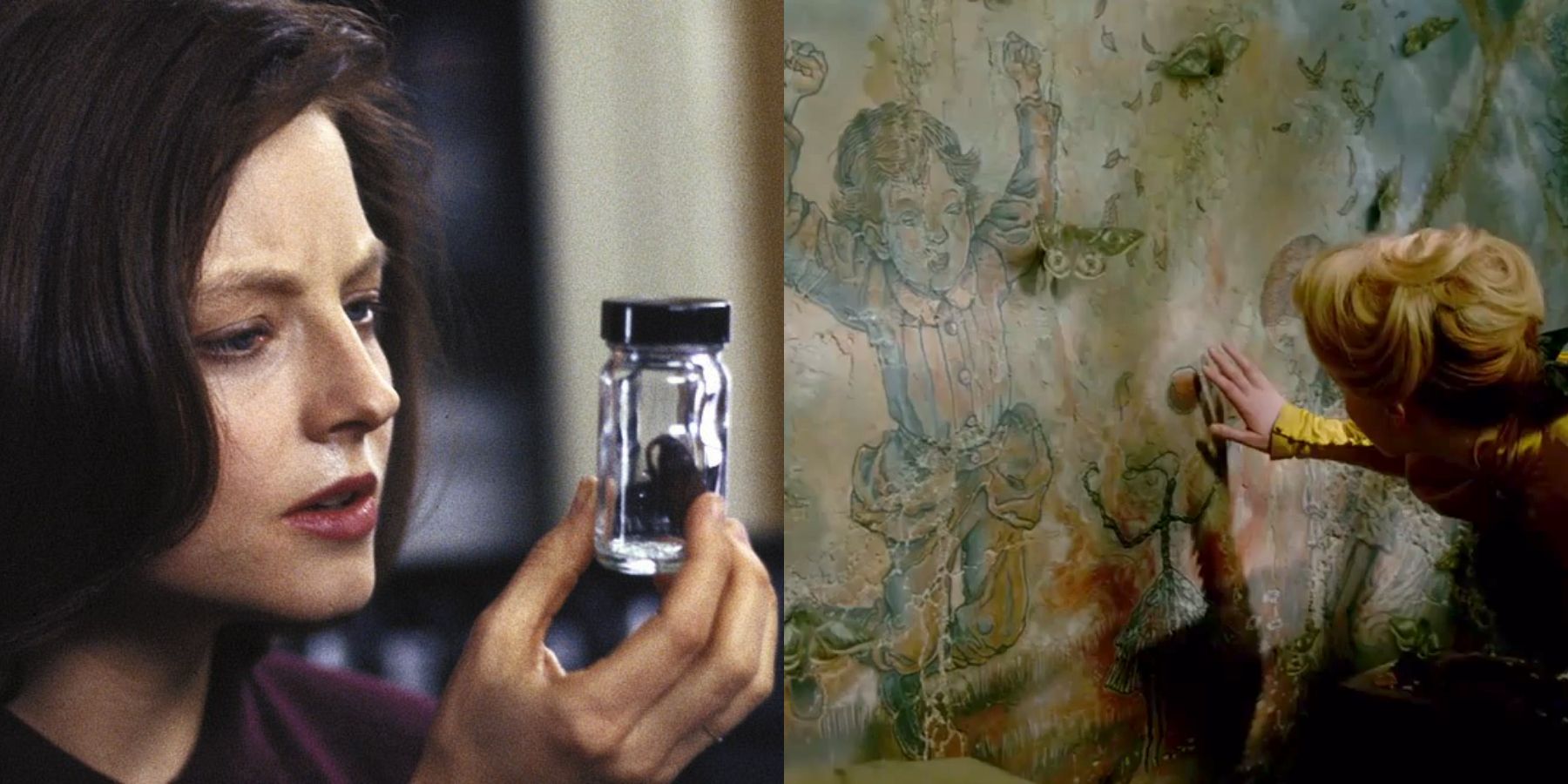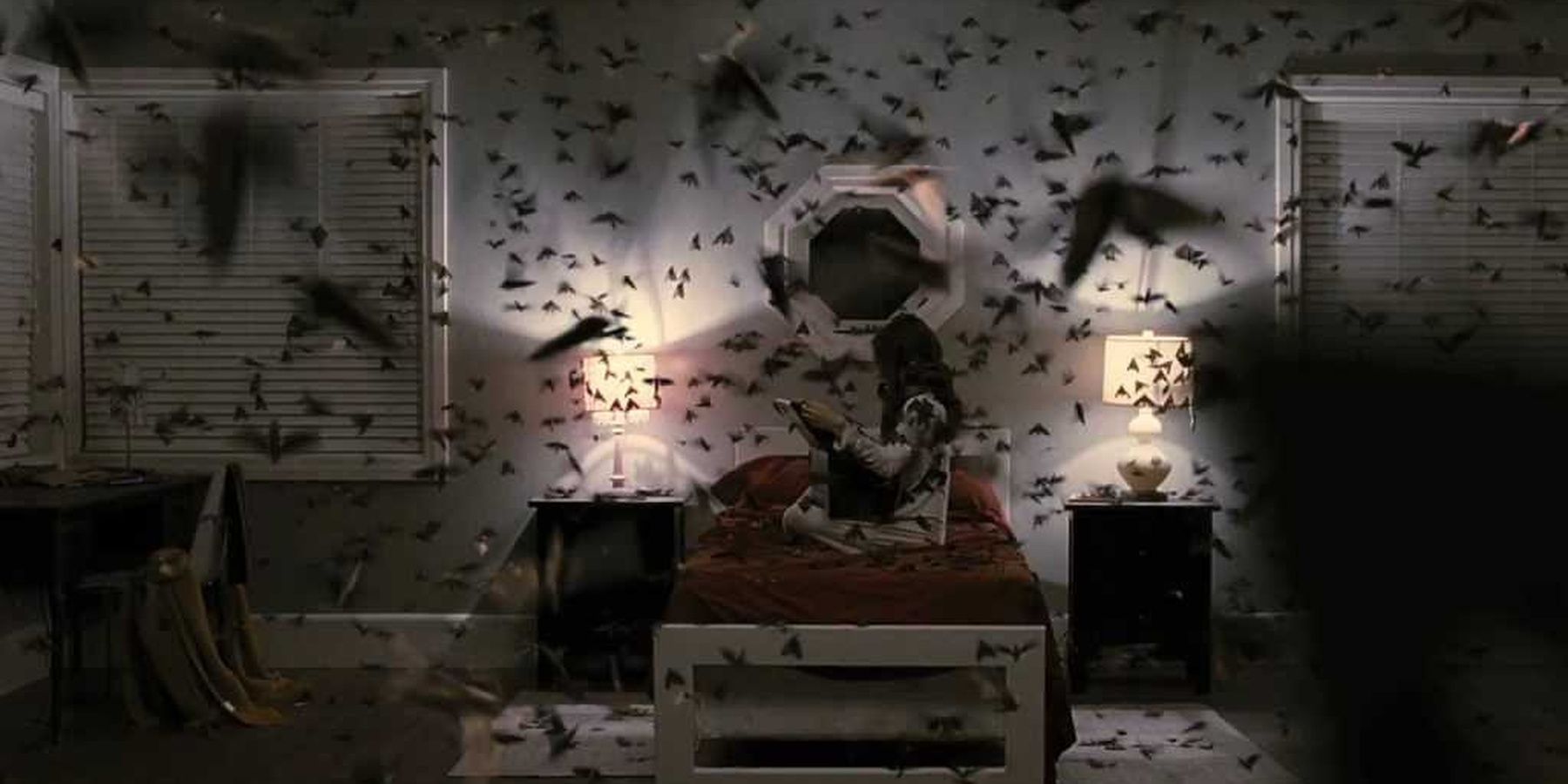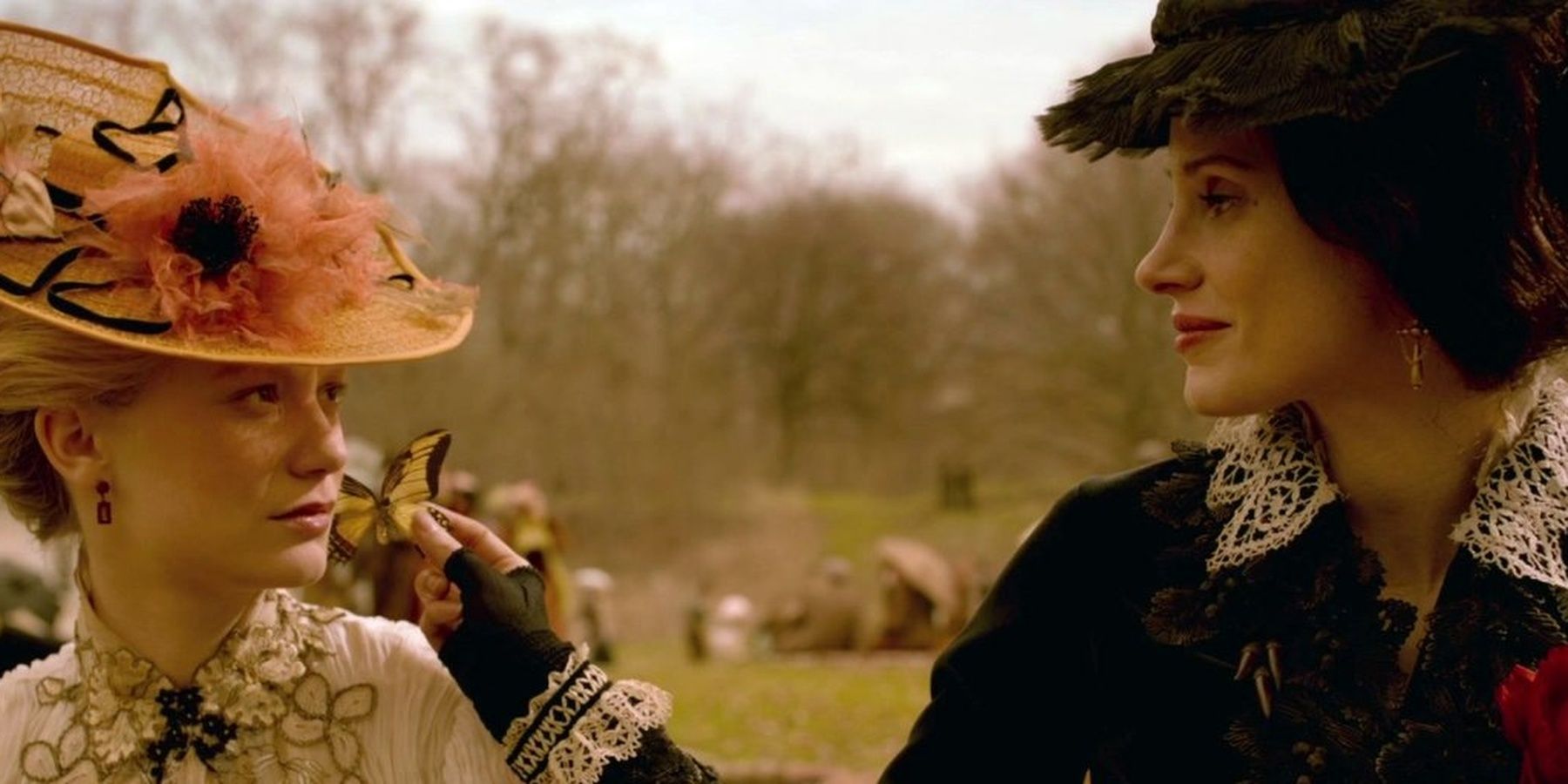Moths have a history as bad omens in the horror genre. While butterflies usually symbolize new life and rebirth, moths are often used to show that some kind of tragedy is imminent. Whether in swarms or just a single insect prominently appearing, the "Macabre Moth" trope is more common in horror films than viewers may realize.
From precursors to possession to harbingers of disaster, moths are heavily used throughout horror as symbolism. With their proclivity for nocturnal life and dull color palette, not to mention the convenient markings of the death's-head hawk, moths rank highly among the insect world as horror-friendly symbols of impending doom. There are plenty of examples of horror media that have used the "Macabre Moth" trope has been used over the years.
One of the most recognizable uses of moths in horror, specifically the death's-head hawk moth, is Silence of The Lambs. As well as being prominently featured in the film's marketing, the moth is an important part of the untangling of the central serial killer. The world's most famous cannibal, Hannibal Lecter, was portrayed in the 1991 film by Anthony Hopkins as he faced off with trainee FBI agent Clarice Starling, played by Jodie Foster. While hunting serial killer Buffalo Bill, Clarice turns to the imprisoned Lecter for his insight into the mind of the killer. Buffalo Bill is a particularly brutal and sadistic killer, leaving his female victims skinned with a death's-head hawk moth shoved into their throats.
As Lecter explains to Clarice in the film, the moth symbolizes metamorphosis, transformation, and rebirth for Buffalo Bill, who longs to transition genders. At this point, it would be remiss not to mention how damaging the portrayal of Buffalo Bill as a transgender character has had a lasting effect on the transgender and LGBTQIA communities. The portrayal of someone wishing to transition as a jealous, woman-hating murderer, who keeps and wears their flesh as trophies, has continued to be detrimental. Still, the moth's importance as a symbol of transformation remains relevant in the trope's use within this story.
When it comes to the "Macabre Moth" as a portent of supernatural evil, several films utilize the symbolism of the nocturnal flier. The 2012 film The Possession, directed by Ole Bornedal and co-produced by Sam Raimi, heavily features moths both in the marketing and throughout the body of the film. Young Emily (Natasha Calis) finds a creepy old box at a garage sale, which quickly begins to worm its way into her mind. When Em is able to open the box, the contents are a ring, a wooden figure, a tooth, and a dead moth.
From there, moths are prominent throughout the film. In one scene, Em's father Clyde (Jeffrey Dean Morgan) and sister Hannah (Madison Davenport) discover Em noncommunicative and staring at the box in her bedroom while surrounded by thousands of moths. In a later scene, Em talks to the demonic presence in a parking lot before becoming fully possessed. The possession is shown as a swarm of moths flying down her throat. In the final confrontation between the demon and Em's family moths, are featured heavily swirling in the air as the entity fights to keep possession of Em.
In Guillermo Del Toro's sumptuous gothic tale Crimson Peak, moths are used similarly to warn of evil, but not of the supernatural kind. Edith (Mia Wasikowska) meets and marries Sir Thomas Sharpe (Tom Hiddleston) after a whirlwind romance. After moving to the Sharpe family home of Allerdale Hall, a crumbling and dusty relic of wealth long since gone, Edith finds herself caught between the two evils that haunt the house: specters and Thomas' sister Lucille (Jessica Chastain). The film frequently pits butterflies (Edith) and moths (Lucille) against each other. The house is infested with dull and dusty creatures. Lucille points out to Edith that the dying gold-toned butterflies cannot survive the cold at Allerdale Hall, and only the black and blue moths can thrive there. Along with the butterfly and moth symbolism, color is also used alongside the insects. Edith favors gold-toned dresses, while Thomas and Lucille are often clothed in black and blue. This is hammered home towards the climax, where Lucille's collection of dead butterflies is revealed alongside locks of all of Thomas' previous wives' hair.
Lucille remarks on the fragility of pretty things throughout the film, and comments to Edith that the moths eat the butterflies while collecting cocoons. Butterflies can be seen mounted as trophies on walls while the moth motif is carried through in the wallpaper of the house. All of these things come together to paint a predatory picture of the moths and, by extension, Lucille. Edith is the butterfly, lured with nectar to the house to be prey for the vindictive moth Lucille.
The "Macabre Moth" motif is a versatile trope and easily recognizable. The contrast between day and night, light and dark, and color and lack of it is an easy link to make for audiences. The inherent knowledge that the dark is dangerous and to be feared allows for the use of moths to signify something horrible is about to happen. The fact that there is an entire species of moth with a skull as natural markings only add to the insect's synergy with the sinister.



